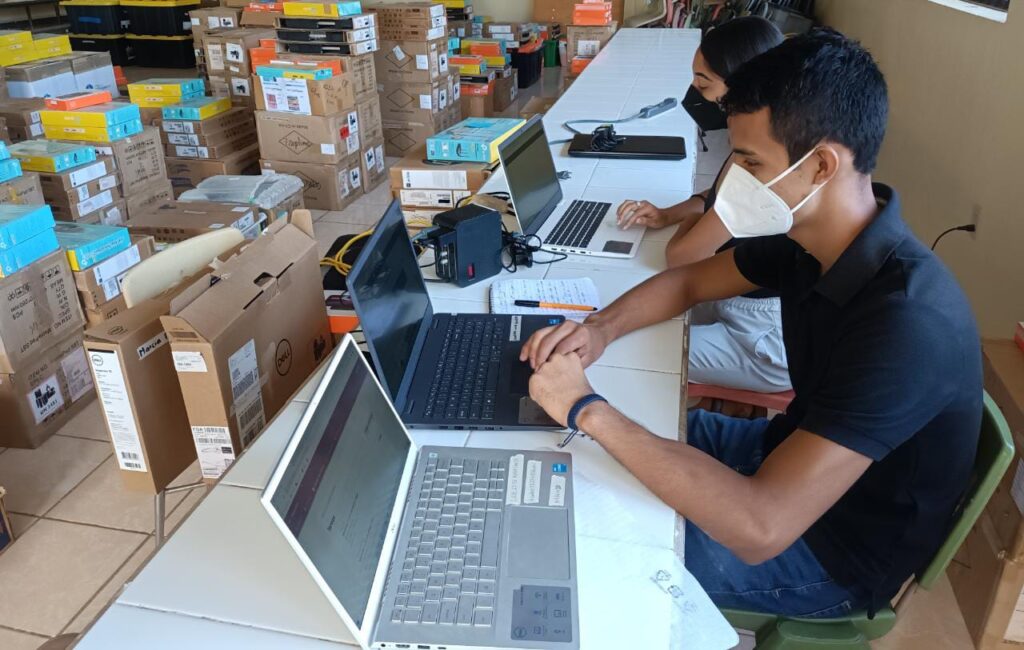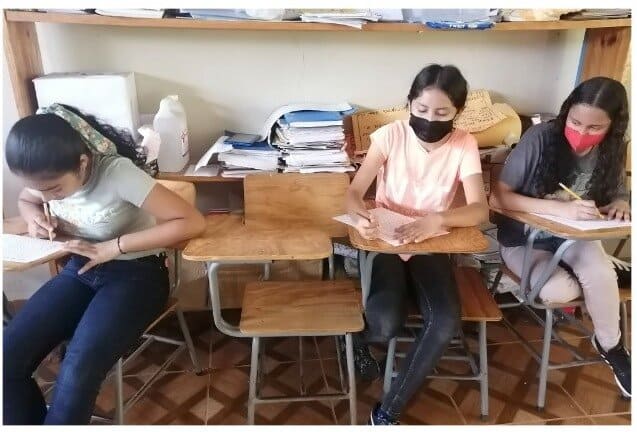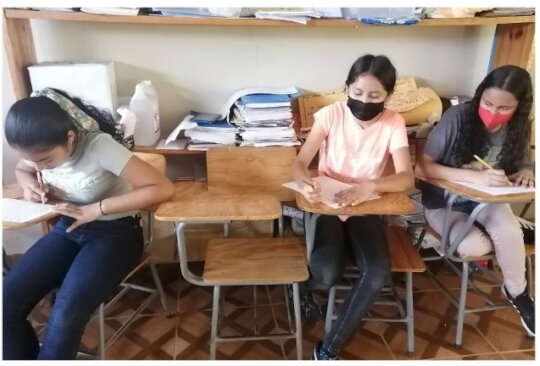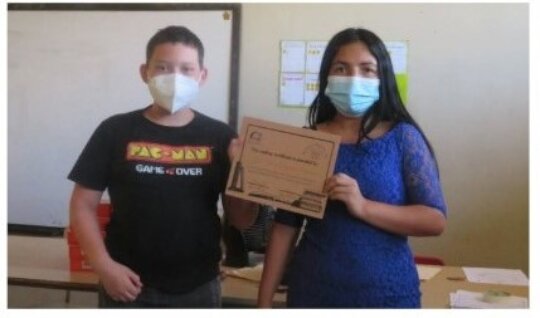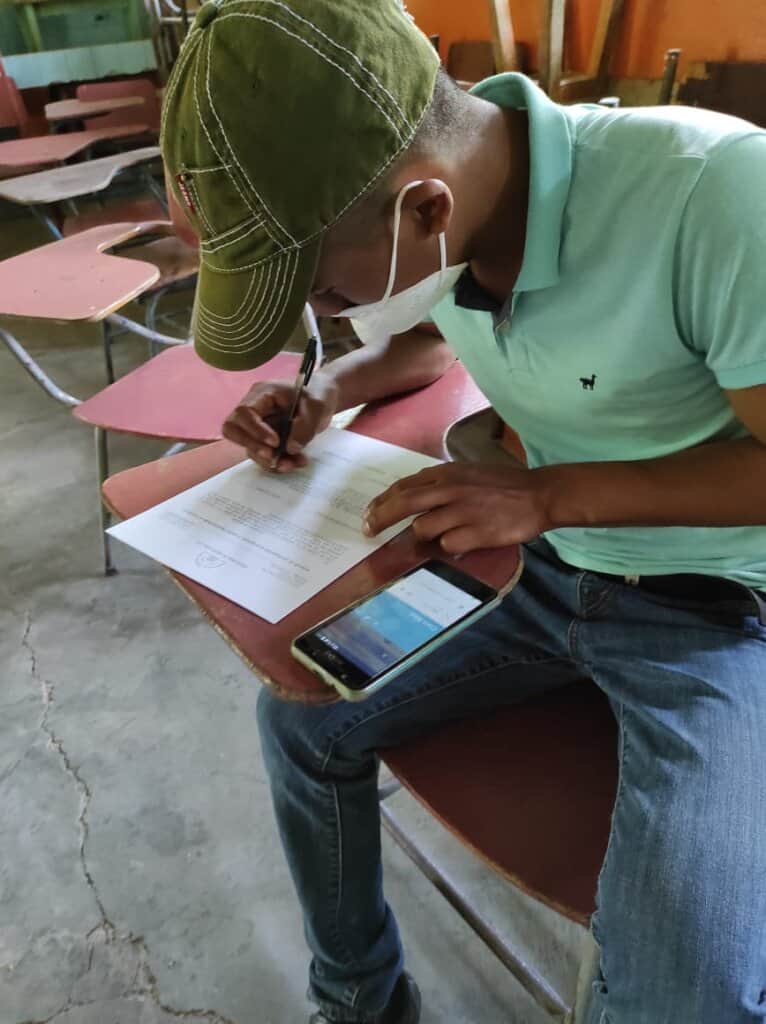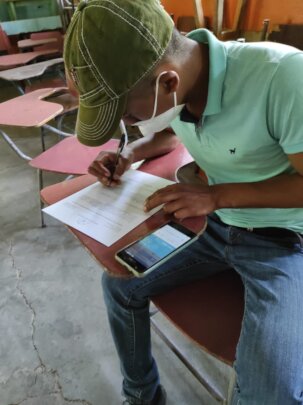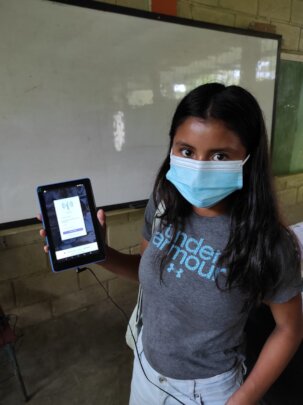| Dear Donor,
The school year in Honduras is from February to November. Thanks to the generosity of the Inter-American Development Bank (IADB) we distributed 3,500 tablets and 120+ computers during the 2021 school year. Also, 1,000 tablets that were donated by the USA Embassy, which we also distributed. In 2022, we will continue to work with the 50+ schools who received the computer equipment…so that the teachers and students will have a successful year. In the photo above, one of our employees, Alex, is working on the configuration and downloading of the 4500 tablets. It was a HUGE job! We employed many local young people, to help us with the project. They learned new skills, and we got the job done on time. It was a WIN-WIN. Your donations allow us to purchase more computer tablets and servers. |
|
|
|
|
| No one can solve all the problems of education in Honduras. But, working together, Little by Little, we CAN make a difference and make dreams come true! |
Reading: A Window Into the World
By Nely Vasquez (with Jessy Molina) – Reading Coordinator
Nely: It started with a small reading contest back in 2019 with 4th-6th graders. They all would look for books at the bilingual school library and because that was the first contest, they were reading like CRAZY. The second year, during the COVID 19 pandemic, we had 75 students from grades 7th-11th. One bilingual group, in the Camasca colegio, and the second group under StS’s scholarship program, spanning 5 municipalities. Our virtual meetings had a lot of connectivity issues and we experienced difficulties with motivating students to attend the meetings. This year, we involved 80 students in 6th-8th grade from two different schools and towns. For our bilingual track we had in-person sessions every two weeks and it was a sort of book club. The second group was led by teachers at one of our Kolibri schools, we had summary videos sent in and also reading reports that were analyzed and evaluated.Since the first year, they have all been a success – not as we were expecting but can still be called so because reading isn’t a hobby in our culture. To encourage students’ reading we have been changing the activities every year and rewarding their efforts with prizes. It’s worth mentioning we are not reading experts but equally have a love for reading and that is what continues to keep us afloat. I can proudly say that the process is slow but is being directed at a good future. Youth are reading and with what we have accomplished, I can see it successful with a bit more effort on our and the teachers’ end along with students enthusiasm.
————————————————————–
Jessy: Though reading appears to be a simple activity, it contributes to the expansion of our minds by providing us with a wealth of information and lessons, while also keeping students engaged. The reading program started in June 2021 and our goal was to read three books by October 2021 — which we accomplished! During the program, we did fun activities to motivate students, we learned a lot of things that will have an impact on our way of thinking, and the students enjoyed and spent time with their classmates even during the COVID-19 pandemic.
Entertaining tasks were planned for the program to engage students and motivate them to read more. In each meeting, students had already read a certain number of chapters from the book, so we could discuss them and talk about our perceptions of the characters and the events that were happening in the story. Bingo, treasure hunt, “wanted” posters, giving a different ending to the story, writing a story with the same characters, asking questions, musical chairs – were some of the activities that Nely and I employed to make students enjoy each meeting and talk about the story because we knew that some students think reading is something boring. However, playing games and doing activities out of the ordinary were the key for them to realize reading can be as much fun as playing a soccer match or playing video games.
While reading, we learned things that will influence our way of thinking. For example, we should not judge people by their size and appearance; there is a time for everythin;, we have to believe we can do it if we want to succeed; and never give up, no matter how many times you fail. Also students developed their critical thinking skills by applying what they knew from the characters in the story and creating a new story with their physical and psychological characteristics. They loved this activity because they were able to use their imagination and apply the knowledge and vocabulary they had already learned. Inferring was also a technique we used with the students to try and guess what was going to happen next in the story based on what we had already read.
Nely and I are satisfied and proud about finishing the program with success. We are looking forward to next year, to continue encouraging the students to read and we are sure it will be even better.
All our participants received diplomas. Congratulations to our top readers!
1st place: Kelly (6th grade)
2nd place: Karol (8th grade)
3rd place TIE: Angel y Joel (7th grade)
Tablets Bring Dropped-Out Students Back to School
By Edel Andino – Information Technology Director
We are pleased to say that in 2021, we delivered 3500 computer tablets to 51 junior/senior high schools.To begin, I want to talk about students dropping out of school. Many of the students who had dropped out, or were in danger of dropping out, returned to schools motivated by using this new technology.
We have seen that some students who have difficulties doing or wanting to do their homework, now due to this new resource they do it more effectively and quickly.
Many of the teachers have been encouraging recreational and assignment reading; but there are also students who have read on their own, beyond the readings assigned by teachers.
We could also see that some parents who were initially afraid to take the tablet because of the responsibility that it meant at home, decided to take it after they saw that the other students were progressing better and more productively than their children.
Among the things that we can observe in the teachers is that they are happy and motivated with the software especially because the students like it much. We receive expressions from some teachers that the resource is serving themselves as reinforcement, mostly in mathematics.
As I said, at the beginning of this project, the learning curve normally takes between 3 to 6 months. We have great hopes for the success of the program once the adaptation period is over and the learning curve has passed.


